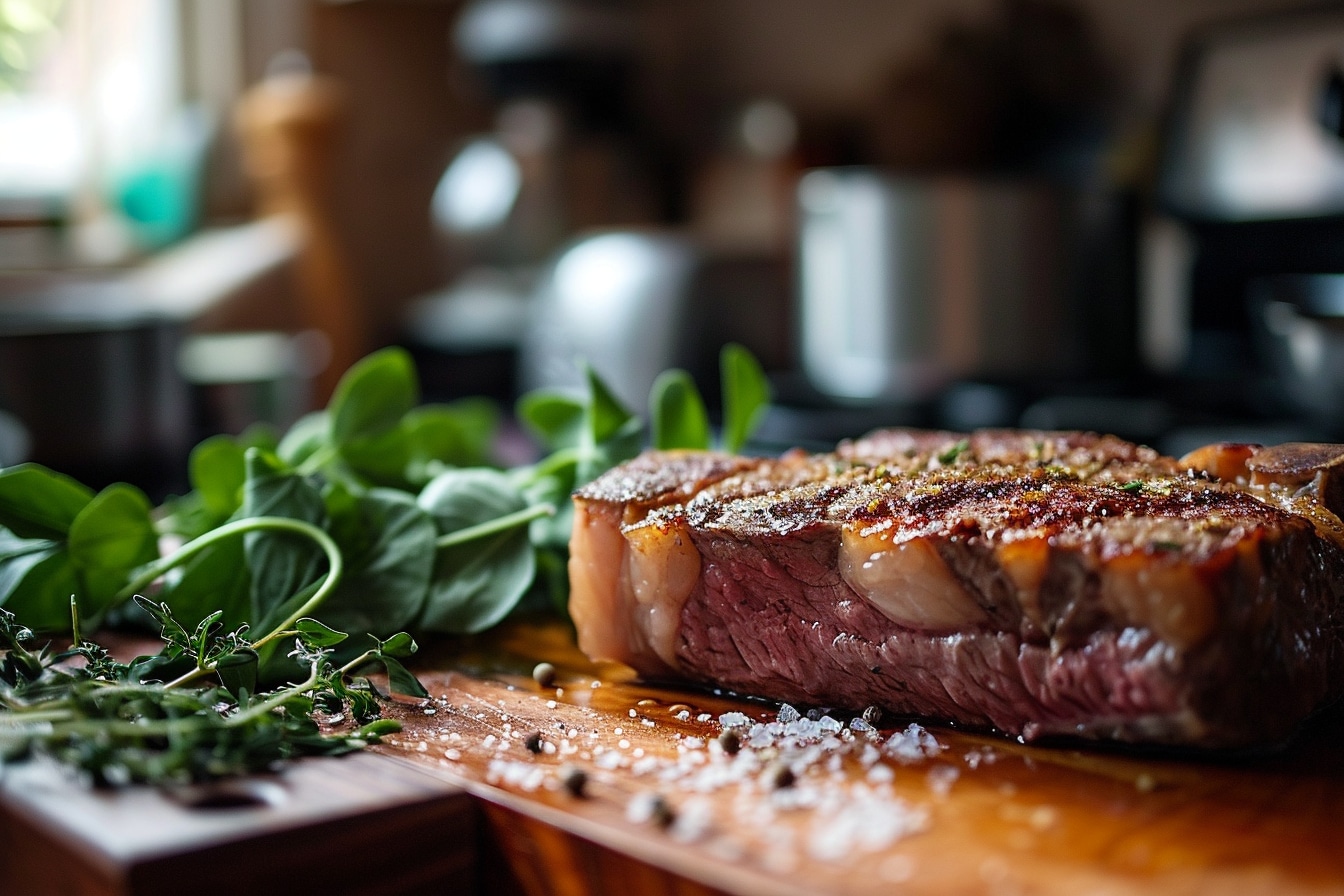Master the Art of Low-Temperature Cooking for Melt-in-Your-Mouth Meats

Low temperature cooking has revolutionized the culinary world by offering a method for obtaining incredibly tender and flavorful meats. This technique involves slowly cooking meat at a controlled temperature and generally much lower than that used in traditional cooking methods. The advantages are multiple: greater preservation of nutrients, better cooking control and a significant reduction in the risk of overcooking.
The fundamentals of low temperature cooking
Principle of gentle cooking
The key to success lies in maintaining a constant and gentle temperature, generally between 50°C and 85°C. At these degrees, meat fibers do not contract abruptly as they would at high temperatures, preserving their tenderness and juiciness. This technique requires time, patience being an essential virtue for those who wish to master the art of low temperature cooking.
The benefits of meat
Cooking at low temperature is particularly suitable for cuts of meat known to be less tender or tougher. When applied to these cuts, it helps break down the connective tissues without drying out the meat, making it exceptionally tender. In addition, this method better preserves the natural aromas as well as the internal humidity of the meat.
Necessary material
To cook at low temperature, suitable equipment is essential. Many chefs use specialized ovens or sous vide cookers (sous-vide), which allow precise temperature regulation. Probe thermometers can be used to track the internal temperature of meat to ensure it reaches the desired level of doneness.
The different gentle cooking techniques
Sous-vide cooking
Sous-vide cooking is probably the best known low temperature cooking method. It involves sealing the meat in an airtight plastic bag before plunging it into a bath of hot water maintained at a precise temperature. This method allows the meat to cook evenly while preserving its flavors and nutrients.
Cooking in the oven
Steam cooking, less common than sous-vide cooking, is carried out in an oven at a temperature generally not exceeding 100°C. It is sometimes used in combination with a liquid, such as a broth, to add even more softness to the meat.
Slow cooker, the advantage of long cooking
Devices like the “slow cooker” or the electric slow cooker are ideal allies for low temperature cooking. Simple to use, they allow you to prepare simmered dishes that slowly absorb spices and aromatics, giving the meat an incomparable flavor and texture.
Prepare your meat for optimal cooking
Preparing meat for low temperature cooking requires special attention, because every detail counts. Here are some steps not to neglect:
Seasoning and marinade
Seasoning meat well and, if necessary, marinating it can significantly enhance its flavors. Marinades based on oil, herbs and spices are particularly recommended, as they penetrate delicately into the meat during cooking.
Pre-Cooking and Searing
It is sometimes suggested to sear meat at high temperature before cooking at low temperature. This step, although not obligatory, helps create a flavorful, golden crust that traps the juices inside the meat.
Rest after cooking
After a long cooking period, letting the meat rest is a crucial phase. This resting time allows the juices to redistribute evenly, thus optimizing the tenderness and juiciness of the final result.
The influence of temperature on meat
Taking a close look at the impact of temperature on meat is fundamental to mastering low temperature cooking. On the one hand, temperatures that are too low may not be enough to kill potentially present bacteria, while temperatures that are too high risk drying out the meat. The search for balance is therefore essential.
Applications of low temperature cooking
This cooking method is not limited to a particular type of meat. Whether beef, pork, lamb, poultry or game, everyone can benefit from the gentleness of this cooking. To take it a step further, experimenting with varying times and temperatures can result in unique culinary creations.
Versatility and creativity in the kitchen
Low temperature cooking also invites creative exploration in the kitchen. Playing with accompaniments, sauces and textures opens up an infinite field of possibilities to surprise and delight the taste buds. Whether for special occasions or for an everyday meal, this technique offers a new dimension to gastronomy.
Open conclusion
Getting started with low temperature cooking techniques requires daring and a bit of experimentation. But once mastered, these methods offer culinary satisfaction like no other. The tender, juicy meats, preserved flavors and subtle simplicity of this cooking process are sure to inspire and impress anyone who has the opportunity to taste these meticulously prepared delights.
Tenderness, flavor and health intertwine in this culinary dance where temperature is king. Cooking at low temperature means reinventing meat, discovering an intersection between patience, technique and art. Ultimately, each dish will turn out to be a taste adventure, where the meat becomes a poem, and the meal, an ode to slowness.
Comments
Leave a comment